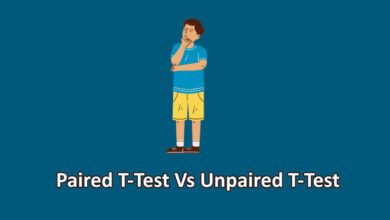Are you tired of being stuck with the same old cellular service provider? Are you looking for a more affordable and flexible option? Look no further, because in this ultimate comparison guide, we’ll be diving into the world of Google Fi and Ting. These two mobile virtual network operators (MVNOs) offer unique approaches to wireless service, each with their own set of benefits and drawbacks.
Google Fi Vs Ting (Comparison Table)
| Google Fi | Ting |
|---|---|
| Google Fi is a mobile virtual network operator (MVNO) that offers wireless services utilizing multiple networks, including Sprint, T-Mobile, Three, and US Cellular. | Ting is a mobile virtual network operator (MVNO) that operates and relies on the Sprint and T-Mobile networks only. |
| Google Fi has flexible plans based on data usage. | Ting has tiered pricing based on device and usage. |
| It offers international coverage in more than 200 countries; some additional costs may be applied. | It offers limited international coverage with some additional charges. |
| It does not offer data rollover, so any unused data does not carry over to the next billing cycle. | It offers data rollover, allowing savings of unused data for up to one year. |
| Google Fi works with select Android and iOS devices; can purchase a Google Fi-approved phone or bring your own unlocked phone. | Ting requires an unlocked device compatible with the Sprint network. |
| Google Fi offers responsive customer support via phone, chat, and email. | Ting offers responsive customer support through phone email and community forums. |
Overview of Google Fi
Google Fi is a mobile virtual network operator (MVNO) cellular service by Google that provides phone, messaging, and data services using both Wi-Fi and cellular networks belonging to Sprint, T-Mobile, U.S. Cellular, and Three. It is available in the United States for most Android phones and iPhones, as well as a select number of other phones.
Google Fi automatically connects users to the best available network based on speed and coverage at their current location. It also automatically switches between Wi-Fi and cellular networks when needed to provide reliable coverage.
Overview of Ting
Ting is a mobile service provider that operates on the Sprint and T-Mobile network. It’s a pay-as-you-go service, so you only pay for what you use. There are no contracts, and you can bring your own device.
Ting offers two plans: pay-as-you-go and fixed price. With the pay-as-you-go plan, you’re charged for the minutes, texts, and data you use. The fixed price plan is a monthly rate that includes a certain amount of minutes, texts, and data. You can add more to your plan if you need it.
Ting is a cell phone plan that’s designed for people who use their phones less often. You pay only for the minutes, texts, and data that you use. And there’s no contract, so you can cancel anytime. Prices start at just $6 per month.
Pros and Cons of Google Fi
Pros of Google Fi:
- Low Cost – Google Fi offers some of the lowest prices on talk, text, and data plans among the major US mobile carriers. It also has no contracts, so you can change your plan at any time without penalty.
- Flexible Plans – With Google Fi, you can switch between different plans based on your usage needs. This allows you to save money by only paying for what you need when you need it.
- Data-Only Plan Option – If you don’t need voice or messaging services but just want a data plan, Google Fi has an option for that too! You can choose a data-only plan and stay connected whenever and wherever you have access to Wi-Fi or cellular networks.
- Great Customer Service – Google Fi is known for its excellent customer service. Its agents are friendly and knowledgeable and they are always available via phone or chat to help with any issue or question that may come up.
Cons of Google Fi:
- Limited Phone Compatibility – Not all phones are compatible with Google Fi. Currently, only certain Google-made phones and select Motorola and LG phones are compatible.
- Data Caps – With Google Fi plans, you get unlimited data but only up to a certain amount of data per month before you reach the data cap. This means that your speeds will slow after you reach this limit, making streaming or downloading large files difficult or impossible.
- Higher Costs for Heavy Data Usage – For those who regularly use large amounts of data, Google Fi plans can be more expensive than other carriers.
Pros and Cons of Ting
Pros of Ting:
- Transparent Pricing – Ting offers very transparent pricing plans which make it easy to understand the costs associated with your cell phone services. There are no hidden fees or charges and you know exactly how much you will be paying for each month.
- Flexible Plans – Ting allows you to customize your plan to suit your needs. You can choose from a variety of different plans and adjust them as needed.
- Quality Service – Ting offers quality service at an affordable price. The company is dedicated to providing customers with reliable coverage and great customer service.
Cons of Ting:
- Limited Coverage Area – Ting does not offer nationwide coverage, so if you travel often or need coverage in rural areas, this may not be the best option for you.
- No Unlimited Data Options – Ting does not offer unlimited data plans, so if you need lots of data each month, another provider may be a better choice for you.
- Limited Phone Selection – Not all phones are compatible with Ting’s service, so customers may have to settle for a less-than-ideal model if they want to switch providers.
Key Differences Between Google Fi and Ting
- Network Coverage – Google Fi offers coverage on three major networks (Sprint, T-Mobile, and US Cellular), while Ting is only available on the Sprint network.
- Monthly Pricing – Google Fi offers a flat rate of $20/month for talk and text, plus $10/GB for data up to 6GB; after that, data is free. On the other hand, Ting’s rates are based on usage with an average of around $20/month for a single line.
- International Coverage – Google Fi offers international coverage in more than 200 countries and territories; however, there may be additional costs involved depending on the plan you choose. In contrast, Ting does not offer any international coverage at this time.
- Device Compatibility – Google Fi works with select Android and iOS devices only; if your device isn’t compatible, you can purchase a Google Fi-approved phone directly from Google or bring your own unlocked phone to use with the service. To use Ting, you must bring an unlocked device compatible with the Sprint network.
- Data Cap – Google Fi does not impose any data cap, meaning you can use as much data as you need. On the other hand, Ting does have a data cap of 100GB per month, which may be an issue for those who use a lot of data.

Who Should Use Google Fi and Who Should Use Ting?
Google Fi and Ting are both great options for people who want to save money on their cell phone bills. However, there are some key points between the two that you should be aware of before making a decision.
Google Fi is a good choice for people who:
– Want to save money on their cell phone bill
– Do not use a lot of data
– Do not need unlimited minutes or texts
– Travel frequently
Ting is a good choice for people who:
– Want to save money on their cell phone bill
– Use a lot of data
– Need unlimited minutes or texts
– Do not travel frequently
Conclusion
We hope that this guide has shed some light on the differences between Google Fi and Ting, and helped you decide which carrier would be best for your needs. Both are great options when it comes to reliable service at a reasonable price. Ultimately, the choice is up to you but if done right, either one can provide an excellent experience for a fraction of what you’d pay with other carriers.



